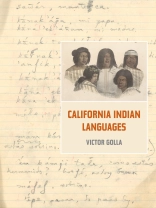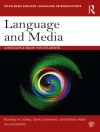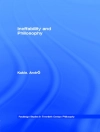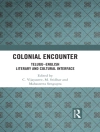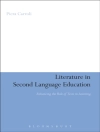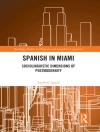Nowhere was the linguistic diversity of the New World more extreme than in California, where an extraordinary variety of village-dwelling peoples spoke seventy-eight mutually unintelligible languages. This comprehensive illustrated handbook, a major synthesis of more than 150 years of documentation and study, reviews what we now know about California's indigenous languages. Victor Golla outlines the basic structural features of more than two dozen language types and cites all the major sources, both published and unpublished, for the documentation of these languages—from the earliest vocabularies collected by explorers and missionaries, to the data amassed during the twentieth-century by Alfred Kroeber and his colleagues, to the extraordinary work of John P. Harrington and C. Hart Merriam. Golla also devotes chapters to the role of language in reconstructing prehistory, and to the intertwining of language and culture in pre-contact California societies, making this work, the first of its kind, an essential reference on California’s remarkable Indian languages.
Tabella dei contenuti
PREFACE
PHONETIC ORTHOGRAPHY
PART ONE Introduction: Defining California as a Sociolinguistic Area
1.1 Diversity
1.2 Tribelet and Language
1.3 Symbolic Function of California Languages
1.4 Languages and Migration
1.5 Multilingualism
1.6 Language Families and Phyla
PART TWO History of Study
Before Linguistics
2.1 Earliest Attestations
2.2 Jesuit Missionaries in Baja California
2.3 Franciscans in Alta California
2.4 Visitors and Collectors, 1780–1880
Linguistic Scholarship
2.5 Early Research Linguistics, 1865–1900
2.6 The Kroeber Era, 1900 to World War II
2.7 Independent Scholars, 1900–1940
2.8 Structural Linguists
2.9 The Survey of California (and Other) Indian Languages
2.10 The Contemporary Scene: Continuing Documentation and Research within and beyond the Academy
PART THREE Languages and Language Families
Algic Languages
3.1 California Algic Languages (Ritwan)
3.2 Wiyot
3.3 Yurok
Athabaskan (Na-Dene) Languages
3.4 The Pacific Coast Athabaskan Languages
3.5 Lower Columbia Athabaskan (Kwalhioqua-Tlatskanai)
3.6 Oregon Athabaskan Languages
3.7 California Athabaskan Languages
Hokan Languages
3.8 The Hokan Phylum
3.9 Karuk
3.10 Chimariko
3.11 Shastan Languages
3.12 Palaihnihan Languages
3.13 Yana
3.14 Washo
3.15 Pomo Languages
3.16 Esselen
3.17 Salinan
3.18 Yuman Languages
3.19 Cochimí and the Cochimí-Yuman Relationship
3.20 Seri
Penutian Languages
3.21 The Penutian Phylum
3.22 Takelma
3.23 Klamath-Modoc
3.24 Maiduan Languages
3.25 Wintuan Languages
3.26 Yokuts
3.27 Miwok Languages
3.28 Costanoan (Ohlone) Languages
3.29 Utian
Uto-Aztecan Languages
3.30 Uto-Aztecan and Northern Uto-Aztecan
3.31 Numic Languages
3.32 Takic Languages
3.33 Tubatulabal
3.34 Giamina (Omomil)
Languages of Uncertain Affiliation
3.35 Yukian Languages
3.36 Chumash Languages
3.37 Southern Baja California Languages: Monqui, Waikuri, and Pericú
PART FOUR Typological and Areal Features: California as a Linguistic Area
Phonology
4.1 Consonants
4.2 Vowels
4.3 Pitch Accent and Tone
Grammar
4.4 Morphological Processes
4.5 Structural Patterns
4.6 Case Marking
4.7 Marking of Plurality
4.8 Stem Derivation
4.9 Switch Reference
Linguistic Culture
4.10 Numerals
4.11 Names
4.12 Diminutive and Other Expressive Symbolism
4.13 Social and Situational Varieties
4.14 Precontact Lexical Borrowing
4.15 Postcontact Lexical Borrowing
PART FIVE Linguistic Prehistory
5.1 The Oldest Stratum? Waikuri, Chumash, Yukian
5.2 Hokan
5.3 Penutian
5.4 Uto-Aztecan
5.5 Algic
5.6 Athabaskan
APPENDIX A. C. HART MERRIAM’S VOCABULARIES AND NATURAL HISTORY WORD LISTS FOR CALIFORNIA INDIAN LANGUAGES
APPENDIX B. MATERIALS ON CALIFORNIA INDIAN LANGUAGES IN THE PAPERS OF JOHN PEABODY HARRINGTON
APPENDIX C. PHONETIC TRANSCRIPTION SYSTEMS WIDELY USED IN CALIFORNIA INDIAN LANGUAGE MATERIALS
APPENDIX D. BASIC NUMERALS IN SELECTED CALIFORNIA LANGUAGES
NOTES
BIBLIOGRAPHY
INDEX
Circa l’autore
Victor Golla, a leading expert on the native languages of California, is Professor of Anthropology at Humboldt State University. He is the editor of The Sapir-Kroeber Correspondence: Letters Between Edward Sapir and Alfred Kroeber, 1905–1925 and of several volumes of The Collected Works of Edward Sapir.
